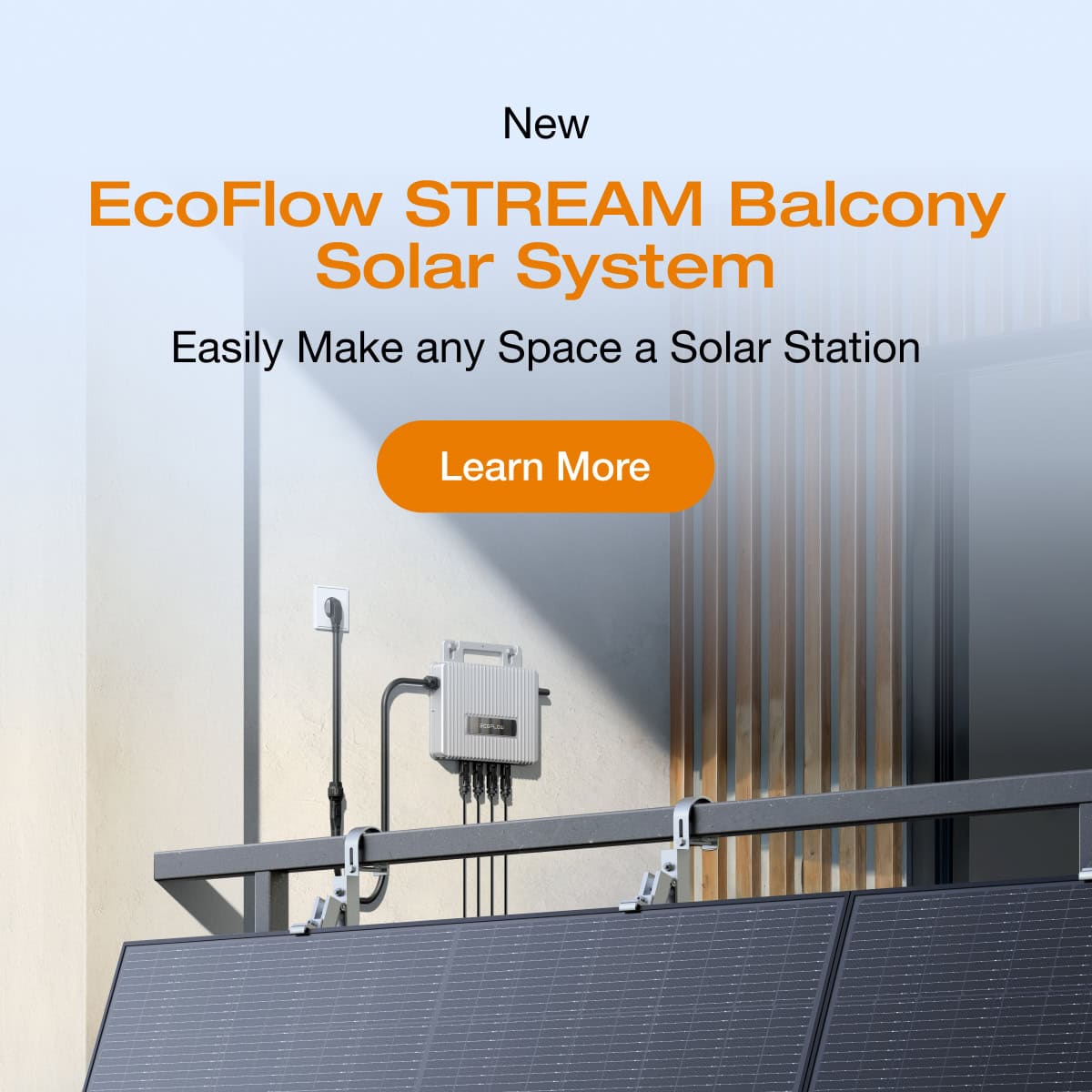Solar panels convert sunlight to electricity through a phenomenon known as the photovoltaic (PV) effect. The more sunlight they receive, the more power they can generate. Counterintuitively, if the panels become too hot, they will actually produce less electricity.
Overheating reduces solar panel efficiency, impacting the percentage of sunlight the panel can transform into power. Read on to learn more about how temperature affects solar panel efficiency and ways to mitigate the effects.
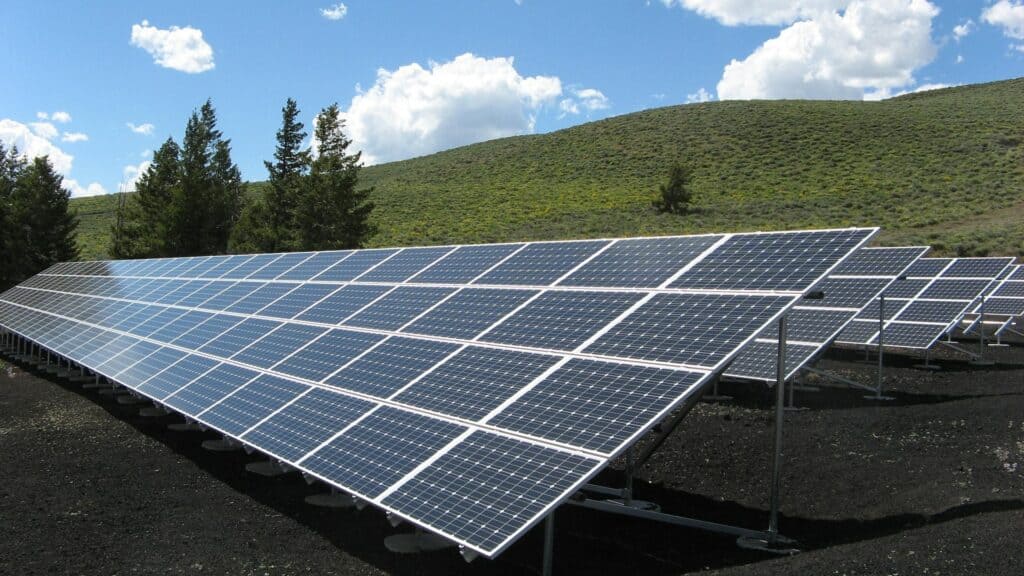
What Is Conversion Efficiency for Solar Panels
Conversion efficiency refers to the proportion of sunlight a photovoltaic panel can convert into usable electricity. It’s an essential performance specification for a photovoltaic (PV) system, as it measures the maximum amount of electricity a panel can generate under peak conditions.
Solar panel efficiency measures the maximum percentage of the sun’s rays that a PV panel can turn into electricity. Higher values indicate better conversion rates.
Over the years, solar panel efficiency has improved significantly due to advancements in materials, manufacturing techniques, and design innovations. Today, the efficiency of consumer photovoltaic panels typically ranges from 15% to 23%.
Laboratory tests have achieved even higher efficiencies — exceeding 40% in some cases. However, these high-efficiency panels are not yet available for the average consumer.
The increase in photovoltaic panel efficiency over time has helped to make solar energy more cost-effective and accessible, contributing to its growing adoption as a clean, renewable energy source.
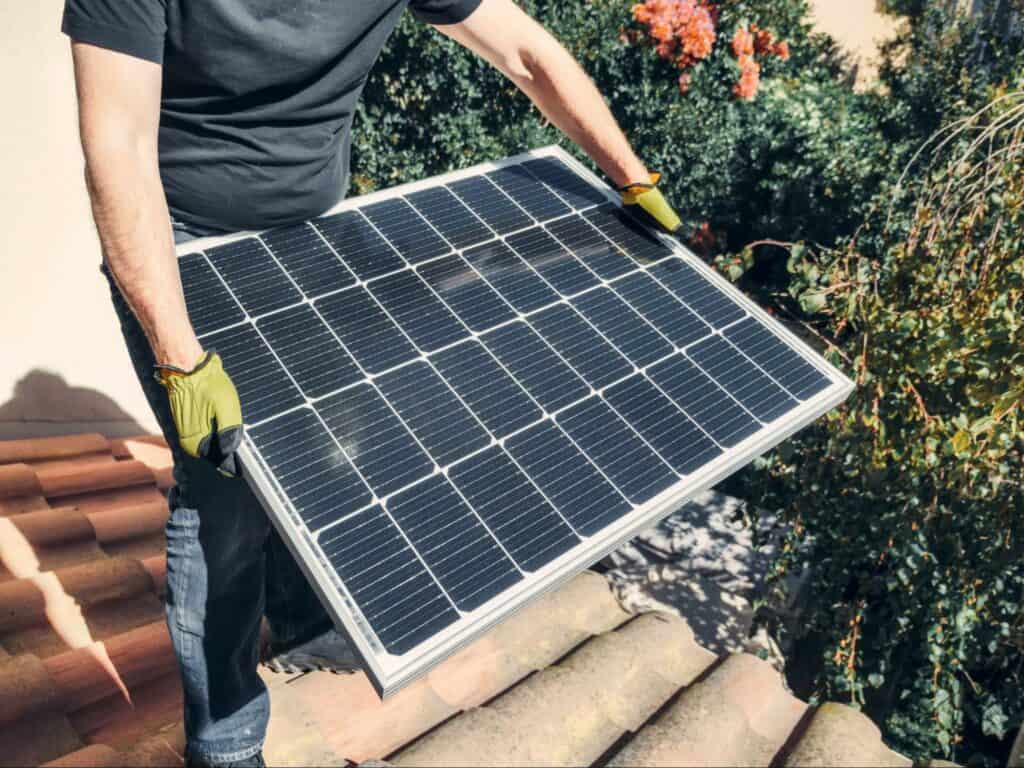
Factors That Affect Solar Panel Efficiency
Various factors can impact solar performance and efficiency, including:
- Temperature: High temperatures will directly reduce the efficiency of a photovoltaic panel.
- Sunlight: The amount of direct sunlight a PV panel receives is typically the most significant determiner of how much electricity it can produce. Even the most efficient solar panel can’t generate electricity at night, and production is diminished on overcast days.
- Orientation and Tilt: Orienting panels towards the sun (facing south if you are in the Northern Hemisphere) to maximise sunlight exposure is best. Depending on your latitude, you can optimise their efficiency by angling them directly toward the sun’s path — around 30-45 degrees.
- Dust, Snow, and Debris: Dirt, leaves, snow, and other debris can block sunlight from the panels. Be sure to clean your solar panels regularly to keep them efficient.
- Panel Age: As photovoltaic panels age, their efficiency will slowly decrease year after year. Having said that, high-quality solar panels can last 25 years or more — longer than an asphalt roof.
- Shading: If shadows from nearby trees or structures block your panels, they won’t reach maximum efficiency. This issue also goes for partial shading — if one cell in a monocrystalline or polycrystalline PV panel is in the shade, the cumulative electricity generation capacity of the panel will be adversely affected.
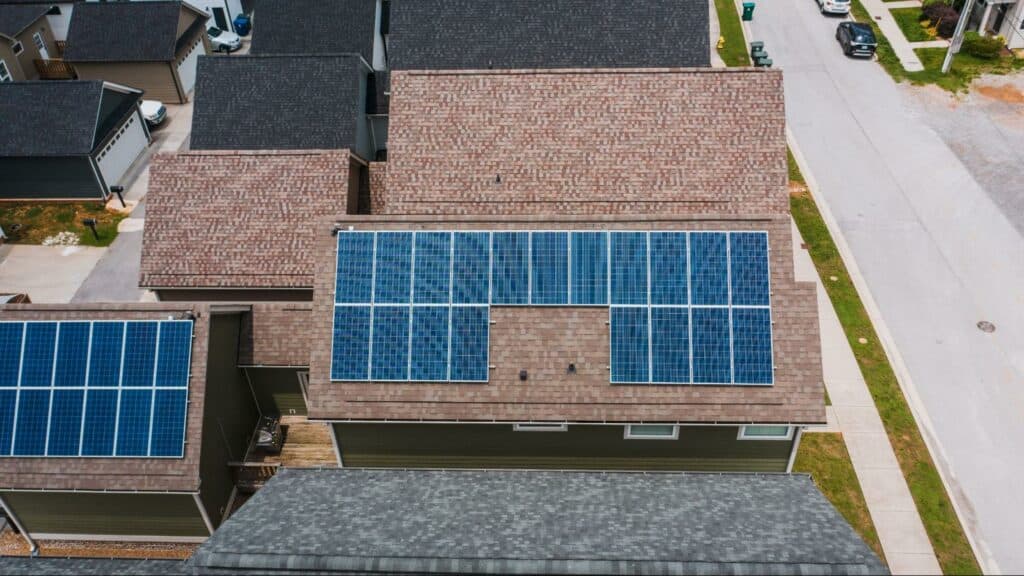
The Relationship between Temperature, Humidity, and Solar Panel Efficiency
Temperature, humidity, and solar panel efficiency are interconnected factors that impact the overall performance of a photovoltaic system. In general, research has found that higher temperatures reduce electrical efficiency. Humidity also plays a part, with lower humidity levels leading to increased output and efficiency.
Solar Panels Generally Perform Better at Lower Temperatures
As the temperature of a PV panel increases above 25°C (77°F), its efficiency tends to decrease due to the temperature coefficient. The coefficient measures how much the output power decreases for every degree Celsius above a reference temperature (usually 25°C).
Higher temperatures cause the semiconductor materials in photovoltaic cells to become more conductive. It increases the flow of charge carriers and consequently reduces the voltage generated.
Some PV panels feature heat dissipation mechanisms to reverse the adverse effects of high temperatures. Passive cooling or enhanced ventilation are proven methods to get photovoltaic panels closer to optimal operating temperatures.
Humidity Can Have Both Positive and Negative Effects on Solar Panel Efficiency
On the one hand, high humidity levels can result in increased cloud cover and atmospheric water vapour. The clouds of humid air can scatter the sunlight or absorb it, reducing the amount of solar irradiance reaching the PV panels. Excessive humidity can also lead to the accumulation of dirt and dust on the panel surface, causing a decrease in efficiency due to reduced light absorption.
On the other hand, humidity can also keep photovoltaic panels cooler by promoting heat transfer through evaporation and condensation, potentially mitigating some of the adverse effects of high temperatures on efficiency.
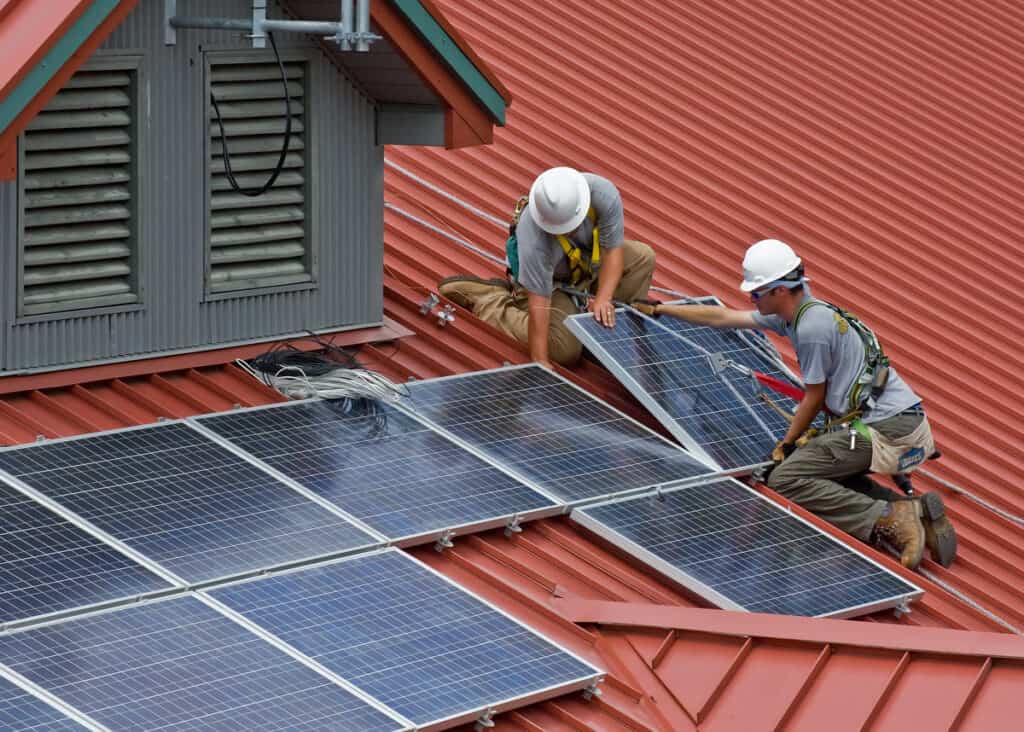
Comparing Solar Panel Efficiency In Hot and Cold Environments
Solar panel efficiency can vary significantly between hot and cold environments due to the influence of temperature on the performance of photovoltaic (PV) cells. Understanding these differences is essential when evaluating the suitability of PV panels for different climates and optimising energy production.
In hot environments, PV panels tend to be less efficient due to the negative impact of high temperatures on the performance of PV cells. As the temperature rises, the output voltage of a solar panel decreases, leading to reduced power generation. For every degree Celsius above 25°C (77°F), a solar panel’s efficiency typically declines by 0.3% to 0.5%.
This decrease in efficiency can be significant in regions where temperatures rise dramatically during the day, such as deserts or tropical areas. In these environments, it’s best to select PV panels with a low-temperature coefficient. Also, installing cooling systems and ensuring adequate ventilation can help mitigate the effects of heat on solar panel efficiency.
In contrast, cold environments can offer improved solar panel efficiency due to favourable temperature conditions for PV cell performance. Lower temperatures lead to increased output voltage, boosting overall power generation.
You should also consider other factors that might affect PV panel performance in cold climates — such as snow accumulation — which can obstruct sunlight and reduce energy production. Installing your PV panels at an optimal angle to facilitate snow shedding and ensure maximum sunlight exposure is best. Even these small changes can maintain efficiency in cold environments.
Don’t forget to account for the reduced sunlight hours during fall and winter, which can impact overall energy generation.
Despite the contrasting effects of temperature on solar panel efficiency in hot and cold environments, sunlight availability remains the most critical factor in determining the effectiveness of photovoltaic energy systems. For instance, a hot climate with abundant sunlight will provide more power than a cold climate without sunlight.
Mitigating the Effects of Temperature on Solar Panel Efficiency
Mitigating the effects of temperature on solar panel efficiency is crucial for optimal energy production, particularly in regions with high ambient temperatures. Several strategies can minimise the impact of temperature on PV panels, ensuring they continue to perform well.
Proper installation and spacing are essential to promote air circulation around photovoltaic panels. A gap between the panel’s rear surface and the mounting structure allows for natural convection. The airflow dissipates heat and keeps the temperature in check. Installing PV panels at an optimal angle and orientation can maximise their exposure to sunlight while reducing the likelihood of overheating.
Selecting PV panels with a low-temperature coefficient is another way to mitigate temperature effects. Panels with lower coefficients experience a smaller reduction in efficiency as temperature increases, making them better suited for hot environments.
Innovations in solar panel materials and designs have led to the development of advanced technologies that can better withstand high temperatures. For example, bifacial solar panels can capture sunlight from both sides. The design enables a lower temperature sensitivity and higher overall efficiency.
Cooling Systems And Their Effectiveness
You can also install cooling systems to manage the temperature of solar panels:
- Passive cooling techniques — such as heat sinks and reflective coatings — effectively dissipate excess heat without requiring additional energy input.
- Active cooling methods — like water-based cooling or forced air circulation — can further enhance heat dissipation but may involve higher costs and energy consumption.
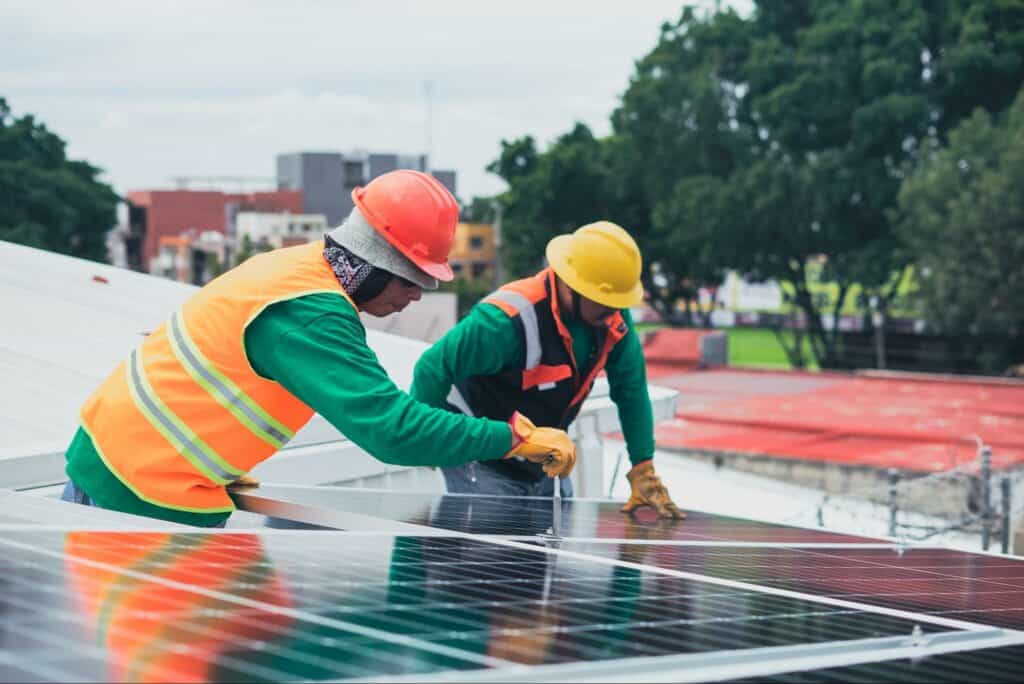
FAQs
The optimal temperature for solar panels is around 25°C (77°F). Solar panels perform best under moderate temperatures, as higher or lower temperatures can reduce efficiency. For every degree above 25°C, a solar panel’s output can decrease by around 0.3% to 0.5%, affecting overall energy production.
Solar panels don’t work well in heat waves due to the temperature-induced decrease in efficiency. As the temperature of the solar panels rises, their power output decreases. During a heat wave, the higher temperatures hinder the panels’ ability to convert sunlight into electricity effectively.
Solar panels can reach temperatures around 66°C (150°F) or even higher under direct sunlight. The temperature increase is due to the conversion of absorbed sunlight into heat. Elevated temperatures can negatively impact solar panel efficiency, reducing energy production. Proper installation and ventilation can help mitigate this issue.
Most EcoFlow solar panels have an efficiency rating of 23%. The higher rating is due to their cutting-edge design and monocrystalline structure — 23% is one of the highest ratings available for consumer solar panels. Polycrystalline panels tend to be cheaper but have a much lower rating — around 15%.
The maximum power point (MPP) is the point on a solar panel’s IV curve where the product of current and voltage is maximised, yielding the highest possible power output. Maximum power point tracking (MPPT) is a technique employed by solar charge controllers to ensure the solar panel operates at its MPP. EcoFlow’s solutions feature MPPT controllers, which are considered superior to PWM (Pulse Width Modulation).



